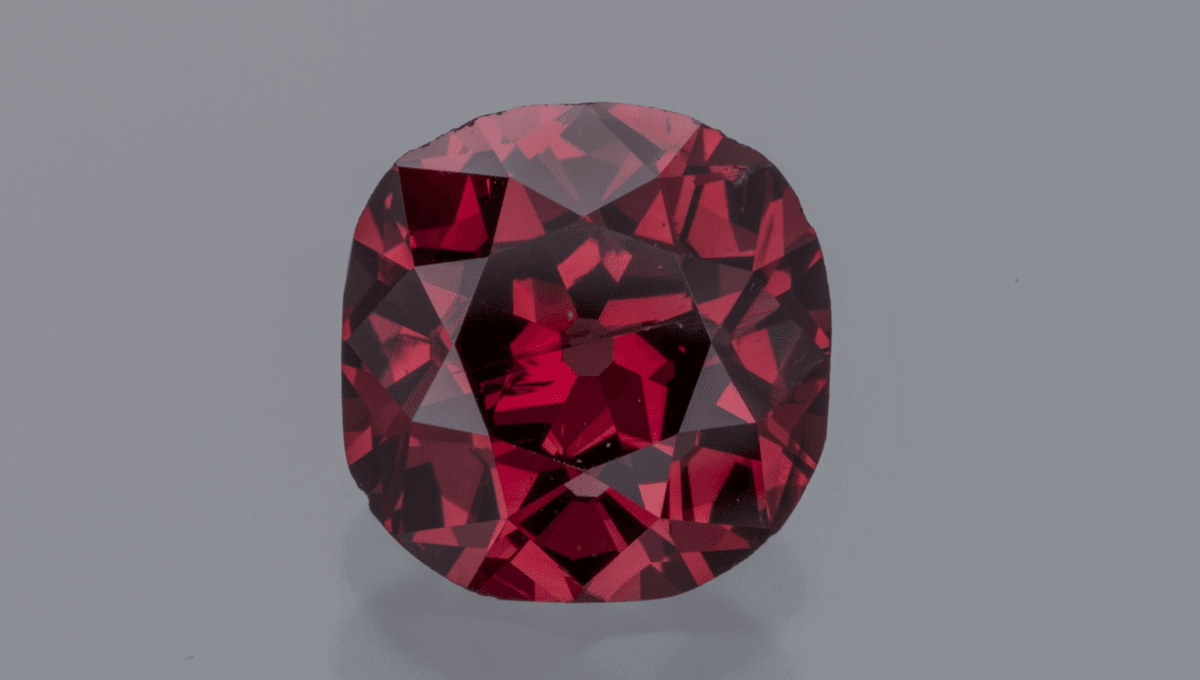-
Ροή Δημοσιεύσεων
- ΑΝΑΚΆΛΥΨΕ
-
Σελίδες
-
Blogs
-
Forum
One Of The World’s Largest And Rarest “Fancy Red” Diamonds Has Been Studied For The First Time

This Is One Of The Largest, Rarest, And Most Famous “Fancy Red” Diamonds In The World
Behold: one of the rarest gems on Earth. This is the Winston Red, a mind-blowingly coveted and deeply mysterious “Fancy red diamond” that’s recently been given the scientific treatment for the first time, offering new clues about its geological origins and story-filled history.
Natural red diamonds are among the rarest gemstones on Earth – and the Winston Red Diamond is a dazzling example. The diamond is defined as having a “Fancy red” color grade, meaning it’s pure red with not even a hint of brown, purple, or orange. At 2.33 carats, it’s one of the largest Fancy red diamonds on public record. The Winston Red Diamond is said to be “priceless”, although stones of a similar quality tend to fetch around $1 million USD per carat. This would place the specimen’s estimated value at approximately $2.3 million. It was gifted to the Smithsonian Museum earlier this year by Ronald Winston, the son of famed American jewelry collector Harry Winston. Its origin is hazy, but the stone has been cut in a distinctive “old mine brilliant” style, suggesting it was fashioned in the first half of the 20th century. This estimate was later supported by historical research, which traced the red diamond’s earliest known record to September 1938, when Jacques Cartier sold it to an Indian leader, the Maharaja of Nawanagar. At this time, the stone was known as the “Raj Red” due to its ties to India. Unfortunately, Cartier archivists have not been able to uncover when or where the diamond was acquired before he sold it to the maharaja. In 1988, Ronald Winston reacquired the red diamond from the Indian aristocrat’s son, Jam Saheb Sri Shatrusalyasinhji, who succeeded his father as the Maharaja of Nawanagar in 1966. The gem was originally slated for a grand unveiling at the November 1988 opening of the Harry Winston salon in Tokyo, but the event was put on hold out of respect for the declining health of Japanese Emperor Hirohito. The diamond ultimately made its public debut a year later at the salon’s anniversary celebration, worn by Hollywood actress Brooke Shields as a gold pinky ring. This much of its history is known, but its geological origin has long been uncertain. To dig deeper into its past, researchers at the Smithsonian National Museum of Natural History in Washington DC scientifically studied the stone's optical properties and compared it to other famed rare diamonds. Red diamonds are formed under the same intense heat and pressure as other diamonds deep within the Earth. However, their rare red hue comes not from trace elements, but from a unique distortion in their crystal lattice. At an atomic level, their structure is subtly twisted in a way that alters how the diamond interacts with light, producing its striking scarlet hue. Writing in their paper, the researchers conclude: “To achieve its red color and dense dislocation networks, the Winston Red diamond likely experienced immense strain under mantle conditions.” The team went on to compare the Winston Red to other similar stones with the hope of providing insights into its origin. This suggests that Venezuela or Brazil, two countries well known to bear red diamonds, are the most likely geographic origin. Nevertheless, they quickly cautioned that “the geographic origin of the Winston Red diamond remains unknown” since the geology of these specific areas has scarcely been studied. For now, the Winston Red diamond remains as mysterious as ever, but the researchers say that’s not stopping it from “becoming one of the most famous fancy-color diamonds in the world.” The new study is published in the journal Gems & Gemology.


